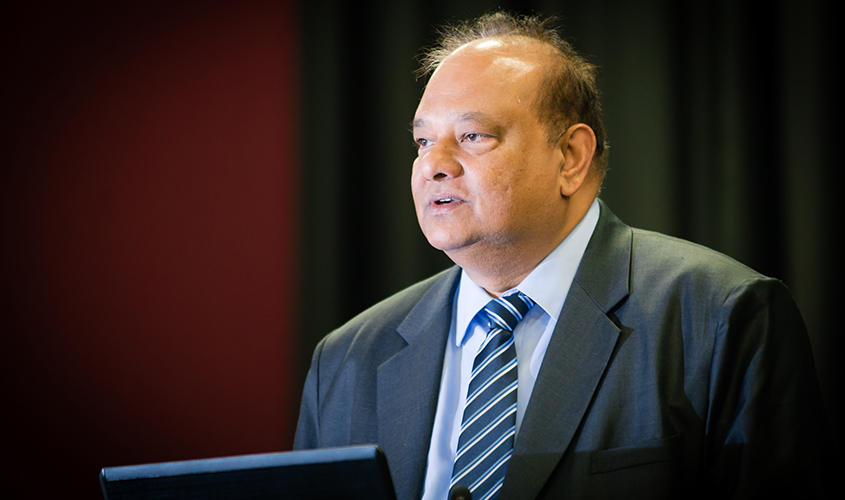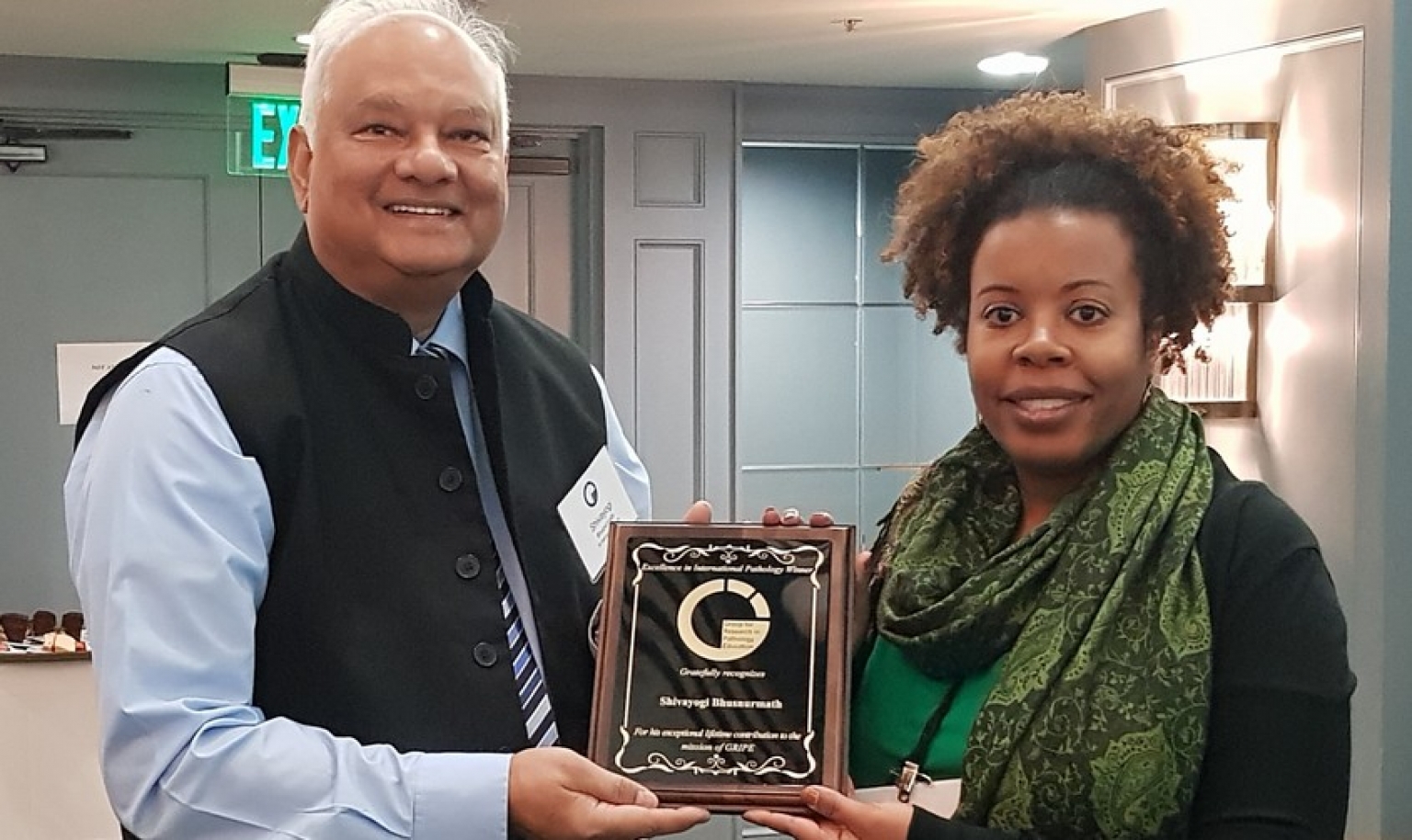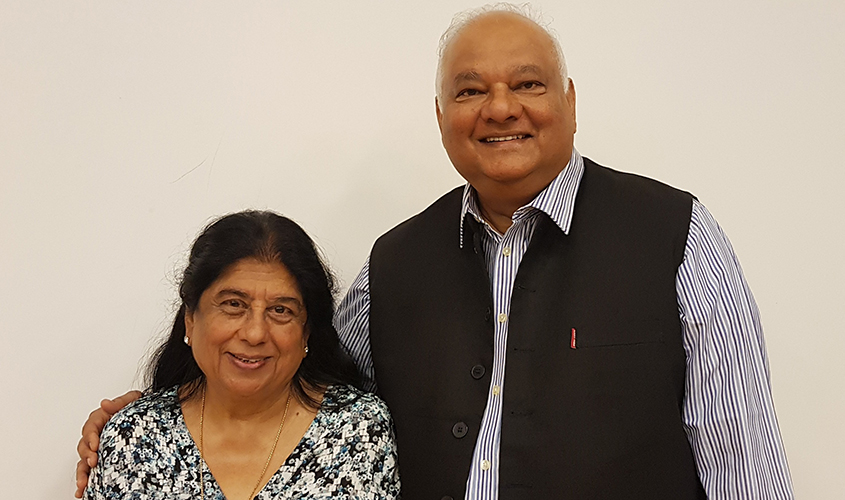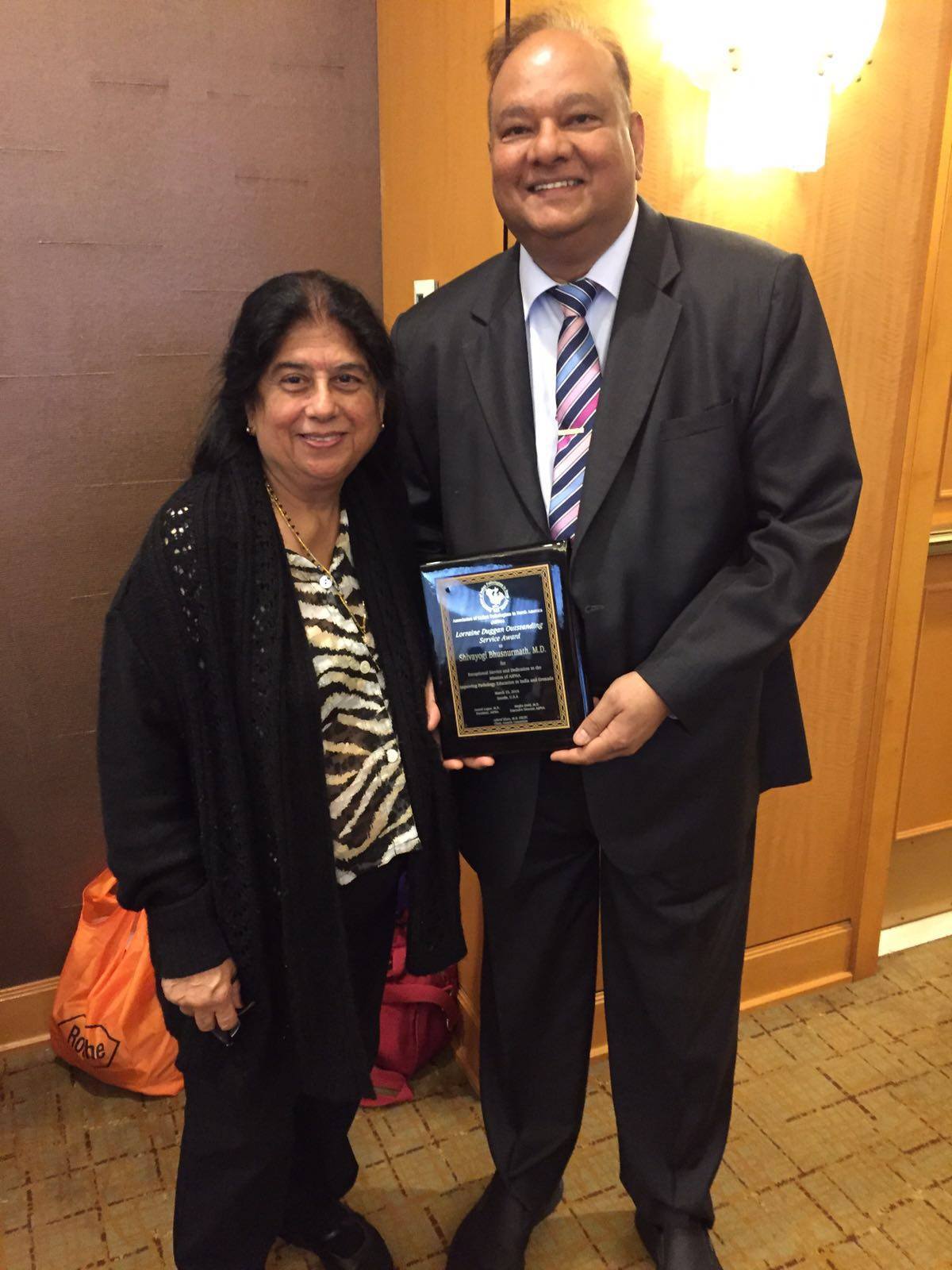(April 3, 2024) While he was doing his residency, Dr. Shivayogi Bhusnurmath experienced the most amusing incident of his career, when a goat made a daring escape from the animal research facility at his institution. “The goat took me for a merry-go-round all over campus. I was exhausted, sweaty, and cursing my luck,” shared the scholar laughing, “After nearly two hours, the goat got tired and I managed to catch it. It was an unforgettable part of my training!”

He might have had a bumpy start, but this Bangalore Medical College alumnus was recently named the Dean of Basic Sciences at the University of Medicine and Health Sciences (UMHS), New York. “I will aim to enhance the New York-based university’s commitment to delivering high-quality medical education, training upcoming physicians to deliver compassionate healthcare, and fostering the ongoing advancement and expansion of UMHS,” said the scholar.
Dr. Bhusnurmath boasts a forty-year tenure crafting curricula at esteemed medical institutions, enriched with a profound reservoir of medical expertise, clinical proficiency, and academic stewardship. Educated at the renowned Postgraduate Institute of Medical Education and Research, Chandigarh, in India, the scholar acquired Fellowship credentials from the esteemed Royal College of Pathologists in London. Across his illustrious journey, he has been dedicated to medical pedagogy, clinical excellence, and scholarly inquiry, disseminating pathology knowledge to medical students and postgraduate residents across a spectrum of nations including India, the United Kingdom, the Sultanate of Oman, Sudan, Japan, Canada, and Grenada.
Accidental doctor
Born and brought up in the beautiful city of Bengaluru, Dr. Bhusnurmath trained in medicine at Bangalore Medical College. Interestingly, the scholar chose to study medicine as he didn’t want to be alone at IIT. “I did medicine during the late 1960s and early 1970s. At that time in India, the only “reasonable” options for high-performing students were engineering and medicine – and parental pressure played a major role in career decisions. Because of my academic successes, I had the option of direct admission to either medical school or the Indian Institute of Technology. I opted for medicine because that’s what my friends chose, and I wanted to stay with them. At the time, I was too young to consider the broader ramifications of my choice,” shared the scholar.

Dr. Shivayogi Bhusnurmath receiving the “Excellence in International Pathology Education Award” from Group for Research in Pathology Education (GRIPE)
In my second year of medical school, the scholar found himself bored with the course. However, it was this boredom that led Dr. Bhusnurmath to his calling. “I was tired after 18 months of anatomy study; the faculty seemed more interested in torturing than inspiring us,” shared the scholar, adding, “Then I read The Final Diagnosis, by Arthur Hailey – and it was a major turning point in my life. The book’s central character was a chief of pathology and I was impressed by the role he played in critical decisions. A young nurse’s limb amputation due to suspected osteosarcoma; an epidemic of enteric fever; the autopsy that revealed unexpected incidental tuberculosis and prompted the screening of an entire family… These examples are still etched in my mind after five decades. In those days, many clinical questions ended with “maybe, maybe not” – so my drive to eliminate medical uncertainties made pathology a natural choice.”
ALSO READ | Dr. Raghu Ram delivers early diagnosis, saves lives
Inside the lab
After he finished his internship, the scholar wanted to pursue a pathology postgraduate programme. At the time, candidates had to do one year as a house surgeon in medicine and surgery first, “I was fortunate to have Krishna Bhargava as hospital director. He created a new position at Bangalore’s Victoria Hospital – house surgeon in pathology – and I was the first inductee,” the Global Indian shared.

Drs. Bharti Bhusnurmath (left) and Shivayogi Bhusnurmath
Eventually, the scholar worked in many developing nations, helping countries overcome epidemics. One incident took place in Zaria, Nigeria, where he was working as a lecturer-consultant at Ahmadu Bello University between 1982 and 1985. “The HIV/AIDS epidemic was just beginning, and we knew nothing about it – but I remember while introducing fine needle aspiration cytology, experiencing accidental needlestick wounds and living in fear for many years because there were no diagnostic tests and no treatments available. Fortunately, I escaped the infection.” From Nigeria, he went to the UK, Japan, Canada, and Oman in the 1990s. “My final move (so far) was in 1996 when I arrived at St. George’s University in Grenada, West Indies.”
Moving to academics
In 1996, the scholar assumed the role of Dean of Academic Affairs at St. George University School of Medicine. However, this position failed to captivate him. Hoping to empower upcoming pathologists with a top-tier education, Dr. Bhusnurmath and his wife established their own academy. “For the past 25 years, the bulk of my work has involved teaching medical students. With my wife, Bharti Bhusnurmath I created a unique programme called the International Clinical Tutor Teaching Fellowship Programme.” The programme started with four medical graduates who lived locally, but they now recruit recent medical graduates from across the globe to help them run small groups in their teaching lab. The course is taught twice a year – involving over 900 students each time – and students come from over 130 countries to join. “We are lucky to have them; although my wife and I could handle lectures for a class of any size, we need high-quality preceptors when we split the class into groups of eight to 10 students for applied clinical learning in the laboratory sessions,” he shared.

However, the pathologist could hardly keep himself away from the lab. “I still process 60 to 80 patient samples per day – mainly in clinical chemistry and hematology, but we also perform fine needle aspiration cytology and sign out surgical biopsies,” Dr Bhusnurmath says. “The cases I see here in Grenada are different from those common in India. Here, I see a lot of sickle cell disease, diabetes, hypertension, human T-lymphotropic virus-related lymph node pathology, prostate and breast carcinoma, dengue, thyroid problems, and seasonal flu,” he said.
ALSO READ | Dr. Kaushik Rajashekara is working on futuristic machines
The scholar has published more than 130 papers that have been cited over 1400 times. “I am also on the editorial board and a reviewer for several prestigious international medical journals of pathology and medical education such as Academic Medicine, and Medical Educator. I have also been a member of the executive committee of CAAM-HP (Caribbean Authority for Education in Medicine and Other Health Professions),” he shared.
- Following Dr. Shivayogi Bhusnurmath on LinkedIn




